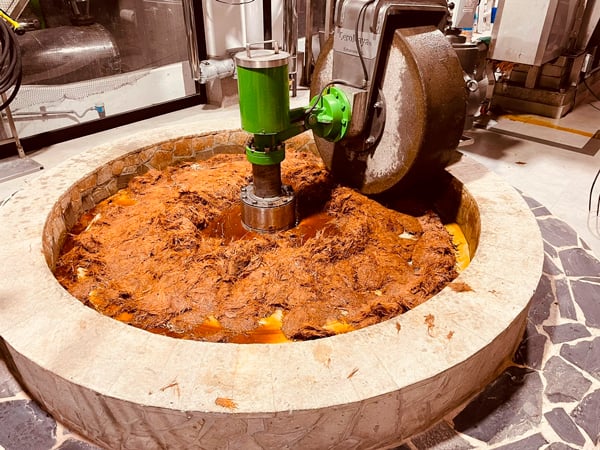 In a previous blog, we covered the first part of the history of tequila, the pre-Hispanic era. This time we want to talk to you about the history of tequila during the Colonial era.
In a previous blog, we covered the first part of the history of tequila, the pre-Hispanic era. This time we want to talk to you about the history of tequila during the Colonial era.
Tequila in the Colonial times
The drink never boomed around this time; it was used for the courtly and working classes. Before independence, a Spanishization was sought, so to speak, so a drink like this, so "indigenous," was not very well received; the same happened with chocolate. Chocolate was not highly respected in its early days. Afterward, it became fashionable among the European aristocracy, not in Mexico, to drink chocolate as something new, rare, and different.
Something similar to chocolate happened to tequila; it was taken only on the "front lines," so to speak, between slaves and courtiers. It was a robust and spirited drink and somehow not considered as sophisticated as brandy or rum might have been, which had a little more history and European lineage.
Tequila was a colonial local drink
Remember that before the Spanish arrived, Mexico did not exist; there were certain tribes that could be classified as "small countries," and each tribe had its habits and ways of consuming the products of its region. So, although agave distillate drinks were found throughout the country, there were specific differences between them:
- Different ways of cooking agave
- Different ways of distilling
- Differences between the same plants according to the region
Although everyone's goal was the same, to make a distilled drink. Eventually, this production was centralized in one region, in the western part of Mexico.
In the central-southern part, they had other types of drinks, and their focus was more on mezcal. In fact, it can be said that mezcal began like this; it is still the case with bacanora, sotol, and the same raicilla... somehow they are part of the same thing: it is the hegemony of a plant of vegetal origin from the area to which these juices are extracted to ferment and distill them eventually. As for preparations, in mezcal, you can sometimes find several:
- Pibiles cooking under the ground
- Ovens
- Chapulas
The recipe may vary, but the end is the same, a distillate.
The old tequila process in Jalisco
Before using a specific plant, which is relatively modern, what was done in agricultural and livestock production was using different agaves for different methods.
For example, in central-southern and central-eastern Mexico, mezcal or agave stalks were used not so much for distillation but for pibiles methods, such as barbecue.
Due to its different species or botanical families, the agave has different uses and capacities; for example, the fermented drink of a pulquero agave may not necessarily taste suitable for a distillate.
In the Jalisco area, the type of production that was used took wild agaves, which were in the Valles region, which is the region that currently borders the vicinity of the Tetilla Volcano. Using donkeys, the agaves found in the field were collected, in the upper parts of the hill, to eventually use an oven cooking method (not pibil, that is, not underground, due to smoking).
The agave was cooked in these ovens and then extracted, which, before the tahona existed, was done by beating; Some were used as baseball bats with which they hit the agave to destroy it. *There is a tequila factory that today uses this method of destruction; later in this same blog, we will talk about its process.
Let's keep in mind that there are two sources to make a mezcal wine distillate because it is very important to differentiate what tequila is currently and what mezcal wine is:
- Mezcal wine is the drink that was obtained from agave fermentation, thus, in the plural.
- Tequila is already a drink distilled from an agave.
Different methods, one goal
In the end, the goal was always the same, to obtain a distillate from an agave, which was the most abundant in the region. Already the cooking, the extraction as such, well that changed according to the recipe of the chef of each tequila house. One of these processes used was that of the tahona.
The Tahona for the tequila process
First, the agave was cooked in small masonry ovens, and then the agave was extracted and cut into pieces so that the volcanic stone called a tahona, which is a one-ton stone, could press the agave to extract that juice.

This extraction of that juice eventually went on to fermentation in natural American oak barrels. Oakwood was even used to make this fermentation more efficient and to have certain shades.
In those times, wood helped natural fermentation to take place faster. No metal was used for fermentation because:
- There was no aluminum
- These types of materials were not available because they were expensive.
- It was not questioned whether a natural fermentation could be innocuous or not.
What was worrying was that the product was fermented, and the wood made it possible to achieve rapid fermentation based on the bacteria that are generated through the fermentation itself.
The distillation did not really change; the distillation did follow the method of the Arab alembics, making a distillation by means of copper. There are those who say that copper provides specific properties in the distillation, but there are also experts who say that it really does not cause a significant affectation, that it does change the profile, but it is due to the very nature of the metal.
*A factory that still extracts the juice by hand
Currently, there is one factory -only- that carries out a process that is worth mentioning here. It is the factory of Salvador Rosales, which is worth mentioning because the truth is a method that nobody has, and the product is very tasty.
To cook the agave, put the hot charcoal, put wood on top, and at the end, to the top, put volcanic earth and then put the agaves on top of that on the volcanic earth. Then they put the earth back on top (of the agaves), and a kind of high vacuum bag is made; that is, the air does not escape, and since the air does not escape, the flavors are more concentrated, and eventually, they are cooked. those agaves. Those agaves are then removed and placed in a circle... they are prepared as if to be crushed in a bakery, but there isn't a bakery as such that is going around, rather people arrive and hit them with those "bats".
As for fermentation, once the juice is extracted, it is placed in wooden containers in the open air to achieve natural fermentation.
Later, that fermented juice or dead juice is sent to be distilled in this type of stills in an old-fashioned way, and a very slow distillation is carried out, with which a slight degree of alcohol is obtained, around 65 degrees to make a second distillation later and eliminate the higher alcohols. That second distillation already has a little more strength, which is how this tequila is made.
It can be said that this factory works following the colonial methods of tequila.
The taverns during Colonial times
It was during La Colonia that small taverns began to be installed. These taverns were actually places of production and were hidden throughout the entire region within the forests because somehow it was not so common to produce a distillate without permission from the Spanish.
Here we end with the second part of this tequila story. We invite you to keep an eye on our blogs so you don't miss the third and last part, Casa Sauza's role in tequila's history.
.png?width=50&height=50&name=10.CS-Redondo%20(1).png)